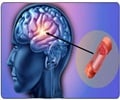Transferring a patient through a helicopter ambulance to a hospital that can perform a thrombectomy will more likely provide the patient with the best chance of recovering from a major stroke, reveals a new study.

‘Moving a stroke patient by helicopter ambulance to the hospital can help them get earlier appropriate stroke care.
’
Read More..




The study An Analysis of Stroke Thrombectomy Interhospital Transportation Modality took place between January 2015 and March 2018 and was released today at the 16th Annual Meeting of the Society of NeuroInterventional Surgery. The researchers behind the study aimed to determine if ground or air ambulance transportation methods allowed a patient to access thrombectomy the fastest. Read More..
The researchers analyzed 133 patients who were transferred to Rush University Medical Center in Chicago, a comprehensive stroke center, for thrombectomy. Patients who were transported to Rush University by helicopter had a significantly shorter time to surgery start.
Furthermore, air transport reduced time more as distances between hospitals increased, getting patients to surgery on average 42 minutes faster when transported more than 30 miles. However, all transport of less than 10 miles was done by ground ambulance.
"We know that when a patient can receive earlier appropriate stroke care, they experience better outcomes. We should consider this study as evidence that transferring a patient by helicopter ambulance to a hospital that can perform a thrombectomy will likely provide the patient the best chance of recovering from a major stroke," says Dr. Hormuzdiyar Dasenbrock, first author of the study from Rush University Medical Center.
"However, patient safety is the first concern, and sometimes air transport cannot be used due to weather; also, air transport may not be faster if the distance between hospitals is less than 10 miles."
Advertisement
Source-Eurekalert















